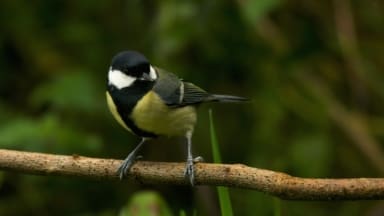
During early spring, great tits (Parus major) abandon their winter flocks and start preparing for the breeding season. They first find a mate and build a nest, then raise their chicks into fully feathered fledglings.
Ecologists from the University of Oxford have now found that the start of great tit breeding occurs more than 15 days earlier than it did in the 1960s, suggesting that great tits have successfully tracked the environmental changes imposed by climate change. The research focused on analysing great tit reproductive phenology – the study and analysis of seasonal events such as plant flowering, bird migration and reproduction.
At Wytham Woods, spring temperatures have increased around 2°C since 1965. Despite the rising temperature, great tits seem to be demonstrating what the researchers call “phenotypic plasticity”, which means that the birds can adapt by producing different versions of the same trait in different environmental contexts. That means that great tit breeding time fluctuations reflect adaptability to climate conditions and food availability.
The research suggests that to maximise breeding success, great tits have been able to synchronise the period of highest chick food demand with peak availability of their main source of food – caterpillars of the winter moth, Operophtera brumata. If they don’t, producing chicks has a much higher energetic cost for the parents to collect food and fewer chicks surviving. By breeding earlier, great tits can stay in sync with the higher availability of caterpillars and meet the demands of their chicks, ensuring greater breeding success.
Wyntham’s great tits have been studied since 1947, resulting in more than 40 generations of great tits have been studied. Birds are tagged (more than 126,000 to date) and researchers record their reproductive cycle, when the great tits lay their eggs in the nest boxes, the number laid and how many chicks hatch. They combine traditional research approach with advanced technology including images taken from satellites and drones, and genetic studies to deepen the understanding of Wytham’s great tits.

